Sharmaynecarter1
On this page, you find all documents, package deals, and flashcards offered by seller sharmaynecarter1.
- 7
- 0
- 0
Community
- Followers
- Following
7 items
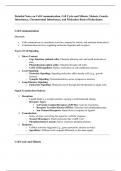
unit 3
cell communication, cell division, genetics and inheritance, and DNA replication.
- Class notes
- • 5 pages •
cell communication, cell division, genetics and inheritance, and DNA replication.
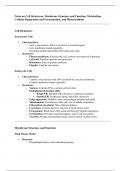
Cell structures
Describe the cell theory. Describe some factors that limit cell size. Describe the typical prokaryotic cell (e.g. size, plasma membrane, cell wall, cytoplasm, ribosomes, nucleoid and flagella.) Describe the typical eukaryotic cell and explain the structure and function of: nucleus and nucleolus, endomembrane system, ribosomes, mitochondria, plastids, the cytoskeleton and cilia, flagella and centrioles. Compare and contrast the characteristics of prokaryotes, eukaryotes and viruses. Des...
- Class notes
- • 4 pages •
Describe the cell theory. Describe some factors that limit cell size. Describe the typical prokaryotic cell (e.g. size, plasma membrane, cell wall, cytoplasm, ribosomes, nucleoid and flagella.) Describe the typical eukaryotic cell and explain the structure and function of: nucleus and nucleolus, endomembrane system, ribosomes, mitochondria, plastids, the cytoskeleton and cilia, flagella and centrioles. Compare and contrast the characteristics of prokaryotes, eukaryotes and viruses. Des...
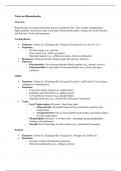
Biomolecules
Describe structures and functions of carbohydrates, lipids, proteins and nucleotide based compounds. Describe four levels of protein structure and how they relate to protein activity. Describe the structure of nucleotides. Describe the DNA molecule.
- Class notes
- • 2 pages •
Describe structures and functions of carbohydrates, lipids, proteins and nucleotide based compounds. Describe four levels of protein structure and how they relate to protein activity. Describe the structure of nucleotides. Describe the DNA molecule.
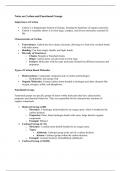
Class notes BIOL 1309 (Biol1406)
Identify some characteristics of carbon that allow it to play such an important role in the chemistry of life. Describe isomers in biology. Identify functional groups of biological molecules.
- Class notes
- • 3 pages •
Identify some characteristics of carbon that allow it to play such an important role in the chemistry of life. Describe isomers in biology. Identify functional groups of biological molecules.
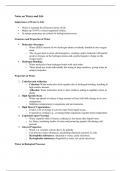
Class notes BIOL 1309 (Biol1406)
Describe properties of water and explain their importance to living systems. Describe the properties of acids, bases, and salts. Define pH. Describe the roles buffers play in living organisms.
- Class notes
- • 2 pages •
Describe properties of water and explain their importance to living systems. Describe the properties of acids, bases, and salts. Define pH. Describe the roles buffers play in living organisms.
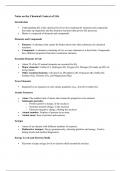
Class notes BIOL 1309 (BIOL1406)
Describe the basic structure of atoms. Interpret chemical and structural formulas. Describe ionic and covalent bonds. Describe hydrogen bonds and nonpolar interactions, and their importance for living organisms.
- Class notes
- • 3 pages •
Describe the basic structure of atoms. Interpret chemical and structural formulas. Describe ionic and covalent bonds. Describe hydrogen bonds and nonpolar interactions, and their importance for living organisms.

unit 1
This covers the basics of biology fundamentals including scientific themes, evolution, chemistry for biology, water chemistry and pH, functional groups, and biomolecules.
- Class notes
- • 4 pages •
This covers the basics of biology fundamentals including scientific themes, evolution, chemistry for biology, water chemistry and pH, functional groups, and biomolecules.
